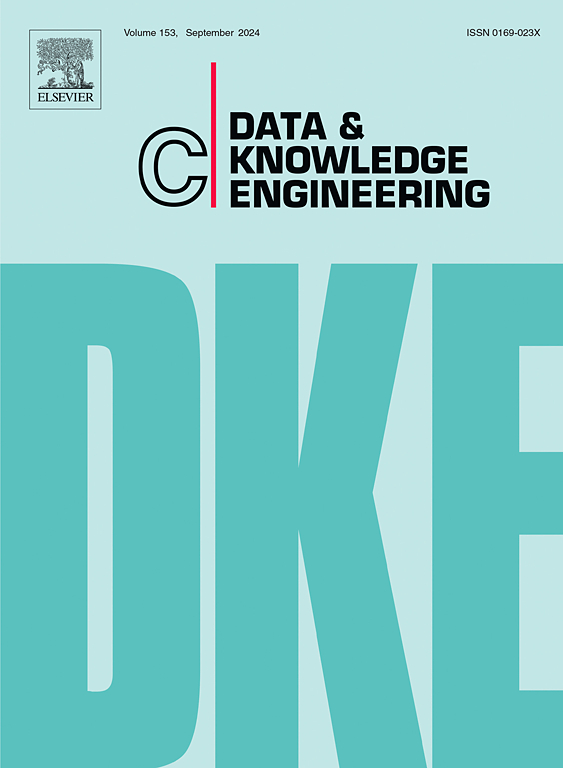将概念模型转变为制度模型-概念模型在转变制度现实中的规范性作用
IF 2.7
3区 计算机科学
Q3 COMPUTER SCIENCE, ARTIFICIAL INTELLIGENCE
引用次数: 0
摘要
传统上认为信息系统描述的是物理现实。然而,随着数字基础设施日益成为现实世界体验的一部分,这种假设正在变得过时。数字基础设施(无处不在和可扩展的信息系统)不再仅仅是将物理现实表示映射到数字对象上,而是越来越多地在创建、塑造和管理物理现实方面发挥积极作用。我们目前目睹了一种“本体论逆转”,即概念模型和数字基础设施改变了物理现实。然而,基本的假设仍然是物理现实是唯一真实的世界。然而,为了完全接受本体论逆转的含义,概念建模需要一个“制度转向”,放弃物理现实总是优先的想法。制度现实,包括,例如,组织、合同和支付交易等制度实体,不仅仅是脱离数字基础设施的物理现实的一部分。数字基础设施是制度现实的一部分。因此,我们要解决的研究问题是:在数字基础设施的设计中,构成和改变制度现实的基本结构是什么?在回答这个问题时,我们开发了概念建模的基础,我们通过对开放银行制度及其相关的数字基础设施进行建模来说明这一点。在本文中,我们将数字机构实体、由软件监管的数字代理和数字机构行动确定为制度背景下数字基础设施建模的关键结构。在此过程中,我们展示了概念建模如何提高我们对制度现实的数字化转型和概念建模的规范性作用的理解。我们还提出了关于合法性和责任需求的理论见解,推动了数字基础设施设计及其后果的研究和实践。本文章由计算机程序翻译,如有差异,请以英文原文为准。
Turning Conceptual Modeling Institutional – The prescriptive role of conceptual models in transforming institutional reality
It has traditionally been assumed that information systems describe physical reality. However, this assumption is becoming obsolete as digital infrastructures are increasingly part of real-world experiences. Digital infrastructures (ubiquitous and scalable information systems) no longer merely map physical reality representations onto digital objects but increasingly assume an active role in creating, shaping, and governing physical reality. We currently witness an “ontological reversal”, where conceptual models and digital infrastructures change physical reality. Still, the fundamental assumption remains that physical reality is the only real world. However, to fully embrace the implications of the ontological reversal, conceptual modeling needs an “institutional turn” that abandons the idea that physical reality always takes priority. Institutional reality, which includes, for example, institutional entities such as organizations, contracts, and payment transactions, is not simply part of physical reality detached from digital infrastructures. Digital infrastructures are part of institutional reality. Accordingly, the research question we address is: What are the fundamental constructs in the design of digital infrastructures that constitute and transform institutional reality? In answering this question, we develop a foundation for conceptual modeling, which we illustrate by modeling the institution of open banking and its associated digital infrastructure. In the article, we identify digital institutional entities, digital agents regulated by software, and digital institutional actions as critical constructs for modeling digital infrastructures in institutional contexts. In so doing, we show how conceptual modeling can improve our understanding of the digital transformation of institutional reality and the prescriptive role of conceptual modeling. We also generate theoretical insights about the need for legitimacy and liability that advance the study and practice of digital infrastructure design and its consequences.
求助全文
通过发布文献求助,成功后即可免费获取论文全文。
去求助
来源期刊

Data & Knowledge Engineering
工程技术-计算机:人工智能
CiteScore
5.00
自引率
0.00%
发文量
66
审稿时长
6 months
期刊介绍:
Data & Knowledge Engineering (DKE) stimulates the exchange of ideas and interaction between these two related fields of interest. DKE reaches a world-wide audience of researchers, designers, managers and users. The major aim of the journal is to identify, investigate and analyze the underlying principles in the design and effective use of these systems.
 求助内容:
求助内容: 应助结果提醒方式:
应助结果提醒方式:


